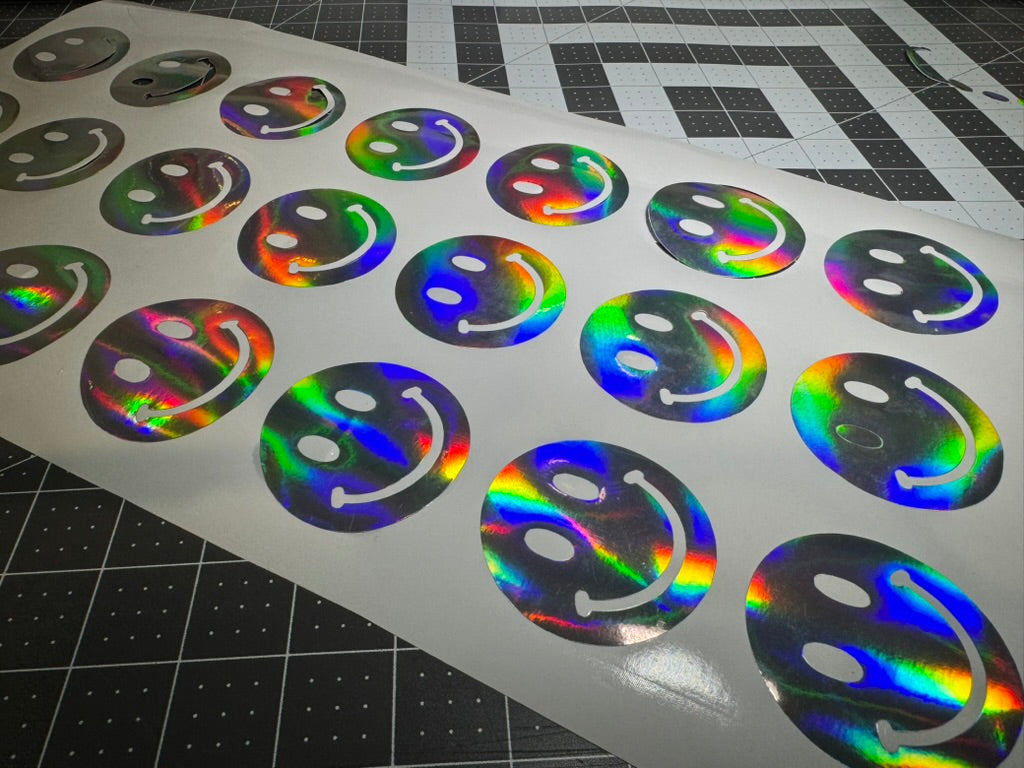Starting a t-shirt business involves more than just creating designs and selling products. Taxes play a key role in how the business operates and grows. Understanding how taxes work can help new entrepreneurs stay compliant and avoid penalties.
There are several areas to learn, including how to set up your business legally, collect and report sales tax, and track expenses for deductions. These steps are part of the foundation for a stable and organized business operation.
This guide explains the basics of business taxes for new t-shirt business owners. It focuses on practical information that applies to small businesses working with custom apparel, heat transfer vinyl, and other design methods.
What Business Structure Is Best for a T-Shirt Business
The business structure you choose affects how your t-shirt business is taxed and what paperwork you'll need to file. The three main options are sole proprietorship, LLC, and corporation.
A sole proprietorship is the simplest structure where you and your business are legally the same. All profits go on your personal tax return using Schedule C. This option requires minimal paperwork but offers no legal protection between personal and business assets.
An LLC (Limited Liability Company) creates a legal separation between you and your business. It protects your personal assets if the business faces legal issues. For tax purposes, most LLCs are treated as pass-through entities, meaning profits pass directly to your personal tax return without corporate-level taxation.
A corporation exists as a completely separate legal entity with more complex requirements. C-corporations pay taxes at the corporate level, which can result in double taxation when profits are distributed to owners. S-corporations allow pass-through taxation similar to LLCs but have stricter eligibility requirements.
Here's a quick comparison:
-
Sole Proprietorship: Easiest to form, no liability protection, business income taxed on personal return
-
LLC: Moderate complexity, good liability protection, flexible tax options
-
S-Corporation: More complex, liability protection, can save on self-employment taxes
-
C-Corporation: Most complex, double taxation possible, best for larger businesses
Most small t-shirt businesses start as sole proprietorships or LLCs. As your business grows, you can always change your structure to match your evolving needs.
How to Register and Obtain Required Tax IDs
Before selling your first t-shirt, you'll need to register your business and get the necessary tax identification numbers.
1. Register Your Business Name
If you plan to use a business name different from your legal name, you'll need to register it as a "Doing Business As" (DBA) name. This registration typically happens at the county clerk's office or state level, depending on your location.
The process usually involves:
-
Completing a registration form
-
Paying a filing fee ($25-$100)
-
Publishing a notice in a local newspaper (required in some states)
A DBA registration doesn't create a separate legal entity or provide tax benefits—it simply allows you to operate under your chosen business name.
2. File for an EIN
An Employer Identification Number (EIN) is like a Social Security Number for your business. It's free to obtain from the IRS and can be applied for online with immediate approval in most cases.
You'll definitely need an EIN if:
-
You plan to hire employees
-
Your business is a partnership or corporation
-
You want to open a business bank account
Even if you're a sole proprietor with no employees, getting an EIN is recommended to avoid using your Social Security Number on business documents.
3. Apply for State Tax Permits
If you'll be selling t-shirts, you'll need a sales tax permit (sometimes called a seller's permit or sales tax license). This document authorizes you to collect sales tax from customers and remit it to your state.
The application process varies by state but typically requires:
-
Your EIN or Social Security Number
-
Business information (address, type of business)
-
Estimated monthly sales
-
Bank account information
Some states process applications immediately online, while others may take several weeks. Once approved, you'll receive instructions on how often to file sales tax returns.
When and How to Handle Sales Tax
Sales tax can be confusing for t-shirt businesses, especially when selling online to customers in different states.
1. Determine Your Nexus
"Nexus" refers to your business's connection to a state that creates a tax obligation. There are two types:
Physical nexus means having a physical presence like:
-
A home office or studio
-
Inventory storage
-
Employees or contractors
Economic nexus is based on your sales volume, typically:
-
Exceeding $100,000 in sales to a state
-
Making 200+ transactions in a state
Each state sets its own thresholds, so check the specific rules where you sell.
2. Register in Each Relevant State
Once you've determined where you have nexus, you'll need to register for sales tax permits in those states. Start with your home state, then add others as your business grows.
If you sell through platforms like Etsy or Amazon, they may collect and remit sales tax for you in some states under "marketplace facilitator laws." However, you might still need to register depending on state requirements.
3. File and Remit on Time
After collecting sales tax, you'll need to file returns and send the money to each state according to their schedule. Filing frequencies include:
-
Monthly: For high-volume sellers
-
Quarterly: For medium-volume sellers
-
Annually: For low-volume sellers
Missing deadlines can result in penalties, so mark your calendar with important tax dates or set up automatic reminders.
Tax Deductions and Write-Offs for T-Shirt Businesses
Taking advantage of tax deductions can significantly reduce what you owe. Here are key deductions for t-shirt businesses:
1. Equipment Purchases and Upgrades
Heat presses, vinyl cutters, computers, and printers used for your t-shirt business qualify as deductible business expenses. You have two main options:
Section 179 deduction allows you to deduct the full cost of qualifying equipment in the year you buy it, up to certain limits.
Depreciation spreads the deduction over the equipment's useful life (typically 5-7 years for most t-shirt business equipment).
For example, if you purchase a $1,500 heat press, you could either:
-
Deduct the full $1,500 in the current year using Section 179
-
Depreciate it over 5 years, deducting $300 per year
2. Inventory and Materials
The cost of materials used to make your products—like blank t-shirts, heat transfer vinyl, and DTF films—counts toward your "cost of goods sold" (COGS). These expenses are deducted from your revenue when calculating taxable income.
Keep detailed records of:
-
Purchase dates and amounts
-
Vendor information
-
How materials were used
The timing of these deductions depends on your accounting method. Under cash accounting, you deduct when you pay for supplies. Under accrual accounting, you deduct when items are sold or used.
3. Marketing and Advertising
All reasonable marketing expenses are tax-deductible, including:
-
Social media ads
-
Business cards and flyers
-
Website hosting and maintenance
-
Samples and promotional giveaways
-
Trade show fees
Save receipts and document how each expense relates to promoting your t-shirt business.
4. Home Office and Utilities
If you run your t-shirt business from home, you may qualify for the home office deduction. The space must be used regularly and exclusively for business—a dedicated room or area where you design, print, or store products.
You can calculate this deduction two ways:
Simplified method: Deduct $5 per square foot of business space (up to 300 square feet)
Regular method: Calculate the percentage of your home used for business and apply that percentage to eligible expenses like rent/mortgage interest, utilities, insurance, and repairs
For example, if your home is 1,500 square feet and your work area is 150 square feet, you use 10% of your home for business. You could deduct 10% of qualifying home expenses.
Handling Local Fees and Permits
Beyond federal and state requirements, your city or county may have additional rules for t-shirt businesses.
Most localities require a business license, which typically costs $50-$200 annually. Home-based businesses might need a home occupation permit to operate legally in residential areas.
Local regulations may restrict:
-
Signage outside your home
-
Customer traffic to your property
-
Use of certain equipment
-
Storage of inventory
Check with your city or county clerk's office about specific requirements for your area. Getting proper permits upfront is easier than dealing with fines or forced business closures later.
Step-by-Step Recordkeeping for Tax Compliance
Good recordkeeping makes tax time much easier and helps protect you in case of an audit.
1. Separate Business Bank Account
Open a dedicated business checking account to keep personal and business finances separate. This makes tracking business income and expenses much simpler and creates a clear audit trail.
When choosing a business account, look for:
-
Low or no monthly fees
-
Free online banking
-
Mobile check deposit
-
Integration with accounting software
2. Tracking Income and Expenses
Choose an accounting method that works for your business:
Cash basis accounting records income when you receive payment and expenses when you pay them. This is simpler and works well for most small t-shirt businesses.
Accrual basis accounting records income when earned and expenses when incurred, regardless of when money changes hands. This gives a more accurate picture of profitability but requires more bookkeeping.
Track these key categories:
-
Sales by channel (online, in-person, wholesale)
-
Material costs (vinyl, blank shirts, packaging)
-
Equipment purchases
-
Marketing expenses
-
Business travel
-
Professional services (accountant, lawyer)
3. Saving Receipts and Invoices
Keep documentation for all business transactions for at least three years (the IRS recommends seven years for certain items).
Digital options for receipt storage include:
-
Taking photos with your smartphone
-
Scanning receipts to cloud storage
-
Using receipt-tracking apps
Organize receipts by month or expense category for easy reference when preparing tax returns.
4. Using Accounting Software
Accounting software streamlines financial management for t-shirt businesses. Popular options include QuickBooks, Wave, and Xero.
Look for features like:
-
Invoice creation
-
Expense tracking
-
Sales tax calculation
-
Financial report generation
-
Bank account integration
Many platforms offer affordable plans for small businesses, with prices starting around $15-$25 monthly.
How to Plan for Self-Employment Tax
As a t-shirt business owner, you'll likely need to pay self-employment tax, which covers Social Security and Medicare contributions.
The current self-employment tax rate is 15.3% (12.4% for Social Security and 2.9% for Medicare). This applies to 92.35% of your net business profit.
For example, if your t-shirt business earns $40,000 in profit:
-
Taxable amount: $40,000 × 92.35% = $36,940
-
Self-employment tax: $36,940 × 15.3% = $5,652
Unlike employees who have taxes withheld from each paycheck, self-employed individuals make quarterly estimated tax payments. These payments cover both income tax and self-employment tax based on projected earnings.
Quarterly payment due dates are typically:
-
April 15 (for January-March)
-
June 15 (for April-May)
-
September 15 (for June-August)
-
January 15 (for September-December)
To reduce self-employment tax liability, consider:
-
Maximizing business deductions
-
Contributing to a retirement plan like a SEP IRA
-
Forming an S-corporation (which may allow taking some profits as distributions rather than self-employment income)
FAQs About T-Shirt Business Taxes
Do I need a business license to sell t-shirts online?
Most cities and counties require a business license even for online-only t-shirt businesses, though requirements vary by location.
How much should I set aside for taxes from my t-shirt business income?
Setting aside 25-30% of your net profit helps cover both income tax and self-employment tax for most small t-shirt businesses.
Can I deduct t-shirts I give away as samples or promotions?
Yes, promotional t-shirts given to potential customers count as deductible marketing expenses when properly documented.
When should a t-shirt business switch from sole proprietorship to LLC?
Consider switching to an LLC when your business faces increased liability risks or when the benefits of legal separation between personal and business assets outweigh the additional paperwork.
What happens if I don't collect sales tax on my t-shirt sales?
Failing to collect required sales tax can result in owing back taxes plus penalties and interest, as states can audit businesses and hold owners responsible for uncollected taxes.
How do I handle taxes if I sell t-shirts at temporary events like craft fairs?
Collect sales tax based on the event location's rate, keep detailed records of sales, and report this income along with your regular business income on tax returns.







